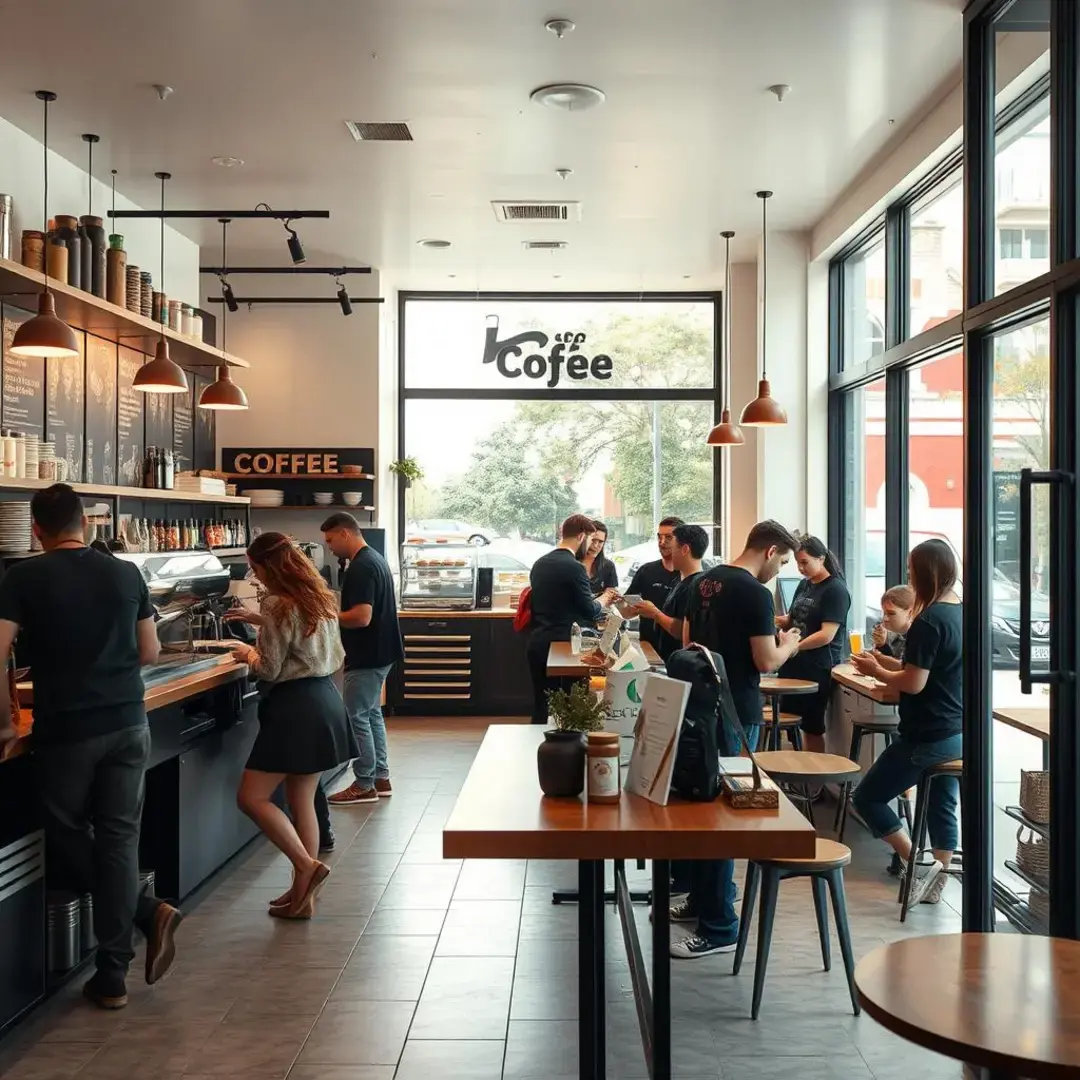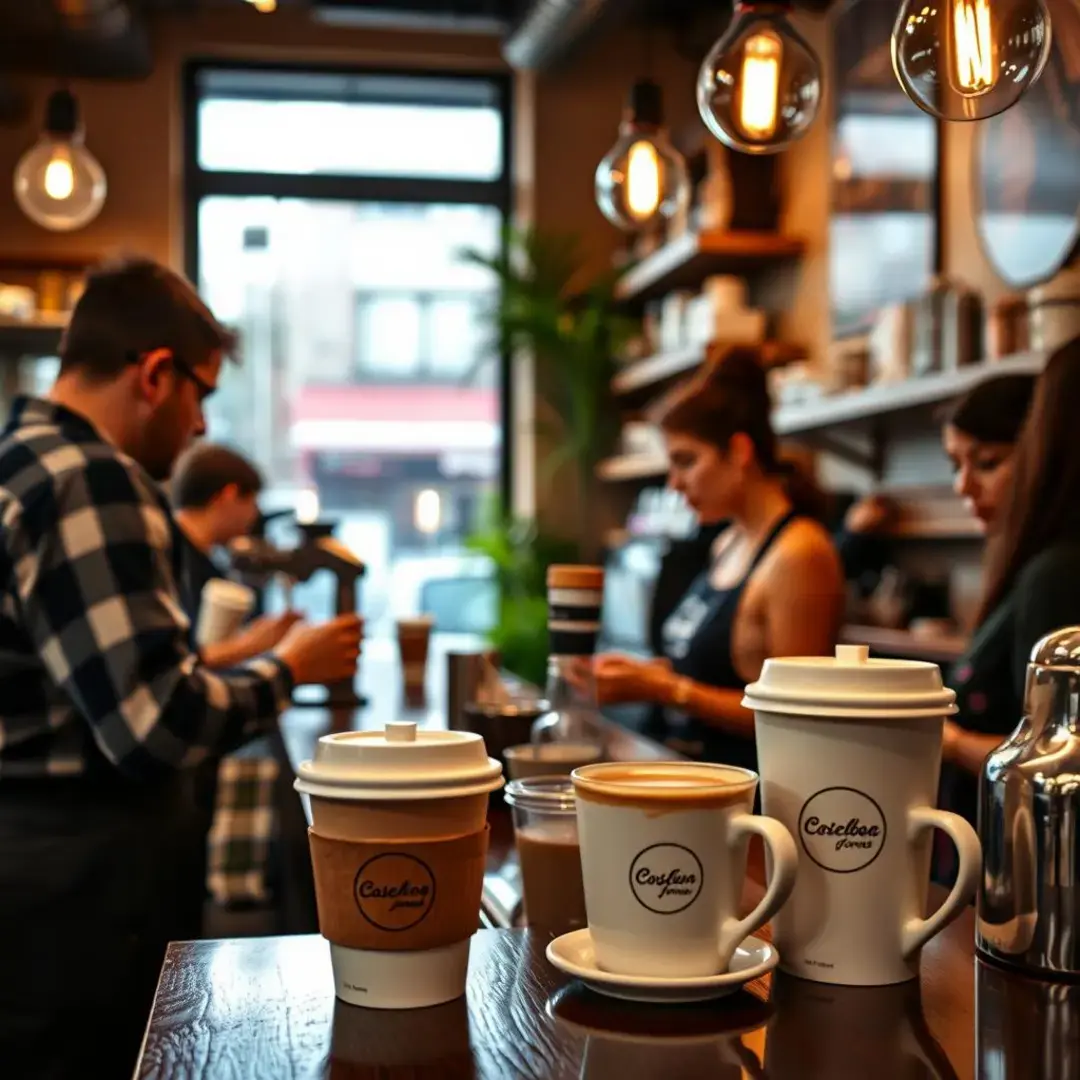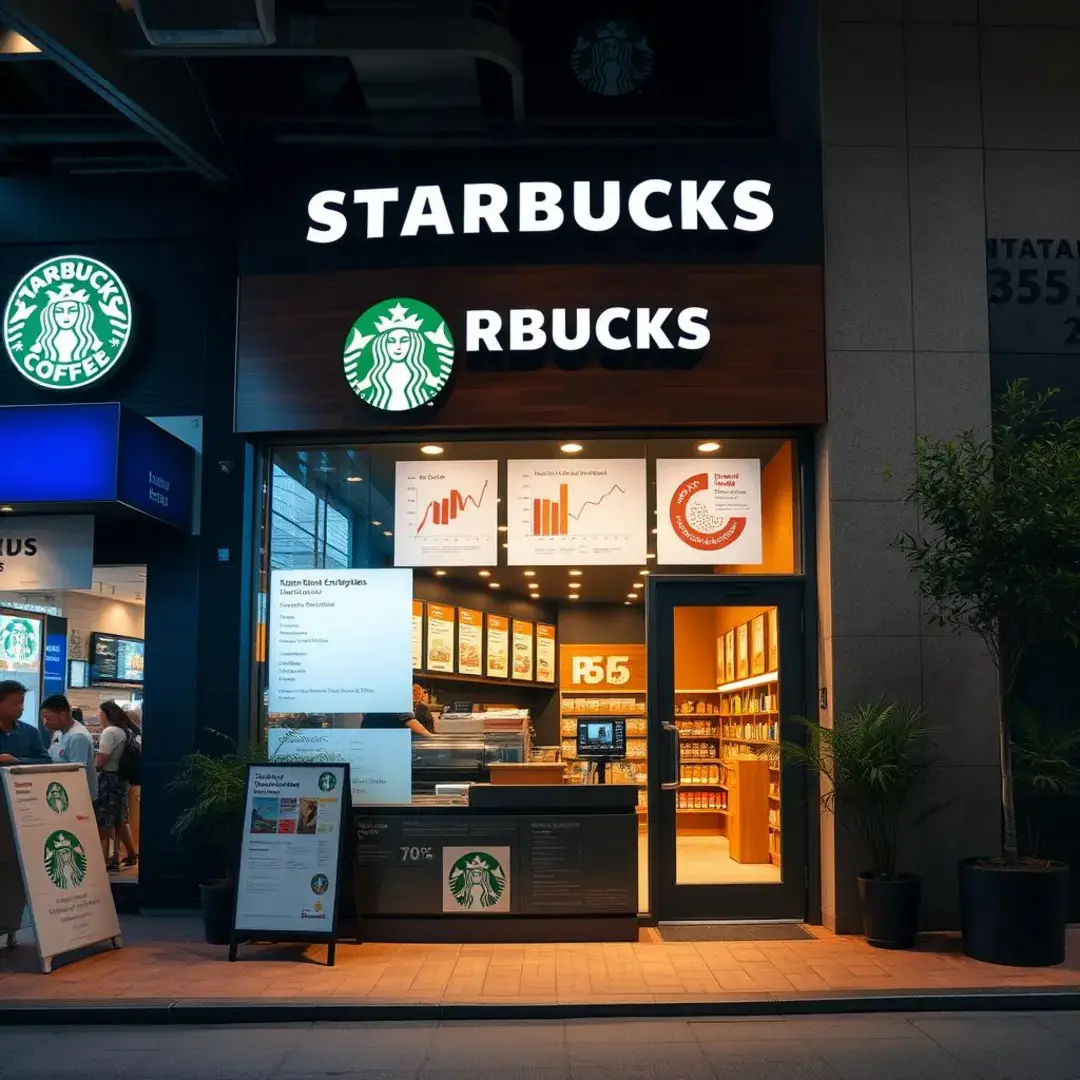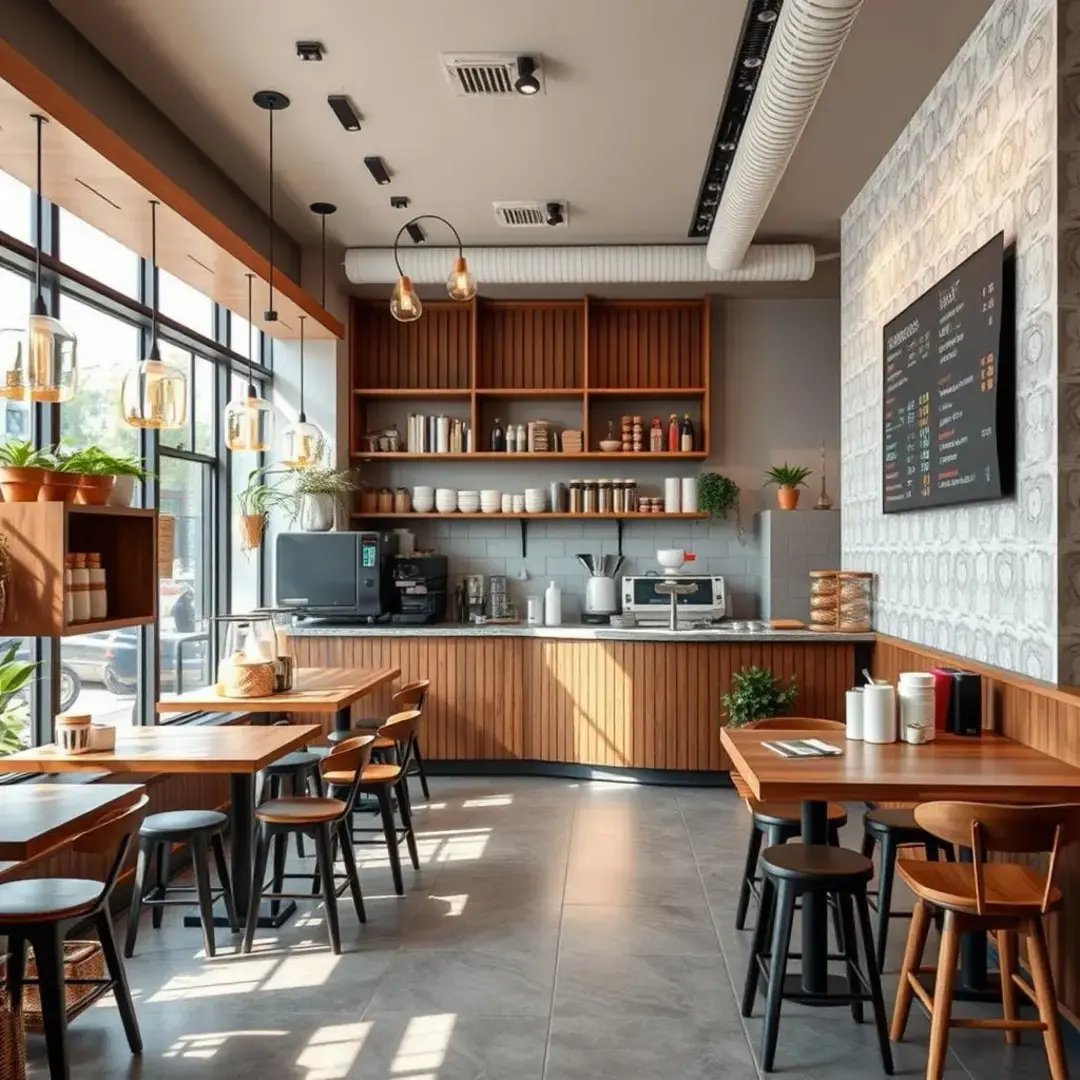Business model starbucks: Brewing success in the cafe sphere
Understanding the Starbucks Business Model

Starbucks has established itself as a formidable player in the global coffee market. By focusing on a unique business model that emphasizes premium products and customer experience, it has set a standard that many challengers aspire to reach. This article aims to dissect the integral aspects of Starbucks’ approach, revealing the core components that contribute to its enduring success.
Core Components of the Starbucks Value Proposition
Starbucks is recognized for its high-quality coffee and innovative beverages that cater to diverse customer preferences. Beyond traditional coffee, the menu has expanded to include seasonal drinks, exotic teas, and artisanal pastries. Offering such premium products allows Starbucks to differentiate itself from cheaper competitors, fostering a sense of luxury around its brand.
The ambiance within Starbucks stores is thoughtfully designed to create a welcoming and relaxing space. Customers are encouraged to linger, enjoy their beverages, and often utilize Wi-Fi for work and social interaction. This focus on creating an experiential environment has transformed Starbucks from a mere coffee shop into a beloved third place, bridging the gap between home and work.
Starbucks has cultivated an undeniable presence worldwide, making it synonymous with coffee culture in many regions. This brand recognition fuels customer loyalty and drives traffic to its stores. From its iconic green siren logo to its commitment to community engagement, Starbucks has built a brand that resonates with consumers across various demographics.
The integration of technology into the Starbucks business model has greatly enhanced customer convenience. Mobile apps enable easy ordering and payment, while loyalty programs track purchases to offer personalized rewards. This tech-driven approach not only streamlines operations but also enriches the overall customer experience, creating a seamless link between digital platforms and brick-and-mortar stores.
Revenue Generation Streams
The cornerstone of Starbucks’ revenue comes from retail sales encompassing beverages, food items, and branded merchandise. Regular promotions and seasonal offerings invite customers to return frequently and try new products, effectively driving consistent sales growth. This wide array of choices encourages upselling, as customers are more likely to indulge in additional purchases.
Starbucks has leveraged licensing and franchising to rapidly expand its footprint globally. By partnering with local businesses, the company can increase its presence without bearing the full cost of expansion. Such strategic alliances provide local expertise and enhance Starbucks’ ability to adapt to various markets without compromising its core values.
In recent years, the ready-to-drink segment has gained traction, with Starbucks introducing bottled beverages and packaged goods available in grocery stores. This diversification in revenue not only satisfies consumer demand for convenience but also allows the brand to capture a share of the competitive retail market outside of its cafes. This strategy creates an additional touchpoint with customers, reinforcing brand loyalty.
The Starbucks Rewards program has proven to be a game-changer in customer retention and engagement. By offering personalized rewards and incentives, Starbucks encourages repeat business while collecting valuable data on customer preferences. Such initiatives are integral to fostering a loyal customer base and understanding trends that can drive future product development.
Key Strategies Driving Starbucks’ Success

Focus on Customer Experience
At the heart of Starbucks’ strategy is the emphasis on personalization. Baristas are trained to recognize regular customers and tailor their orders, creating a unique connection that fosters loyalty. This commitment to individualized service makes customers feel valued, enhancing their overall experience and encouraging them to return.
Starbucks has successfully built a robust loyalty program that offers rewards and incentives for frequent visits. Customers earn points with every purchase, which can be redeemed for free drinks and food items. This structure not only motivates repeat visits but also creates an emotional bond with the brand, compounding the sense of belonging within the Starbucks community.
Starbucks understands the importance of community engagement in bolstering its brand image. Through various initiatives, such as local events and social responsibility programs, the company fosters a sense of belonging among its customers. Engagement with local communities allows Starbucks to resonate with customers on a deeper level, promoting a positive perception of the brand.
Global Expansion and Market Penetration
One of the key drivers of Starbucks’ success is its strategic approach to location selection. The company strategically places stores in high-footfall areas, ensuring maximum visibility and accessibility. Additionally, the use of various store formats allows Starbucks to cater to different markets, from compact kiosks in urban centers to expansive cafe locations in suburban areas.
Starbucks recognizes the importance of localizing its menu to resonate with diverse consumer preferences. In various markets, the company has adapted its offerings to include local flavors and ingredients, demonstrating respect for cultural differences. This approach not only enhances customer satisfaction but also establishes Starbucks as a global brand with a local touch.
Starbucks has made significant strides in sourcing coffee sustainably and ethically, investing in programs that support farmers and promote environmental responsibility. By ensuring that its supply chain adheres to strict ethical guidelines, Starbucks builds trust with consumers who prioritize socially responsible brands. This not only strengthens the brand image but also contributes to the overall value proposition of quality and transparency.
Innovation and Product Development
Innovation remains a cornerstone of Starbucks’ product strategy. By introducing seasonal beverages and limited-time offers, the brand creates excitement and urgency among customers. This approach not only drives foot traffic during peak seasons but also cultivates a culture of anticipation and exclusivity around new product launches.
Starbucks has significantly expanded its food offerings in recent years, partnering with local bakeries and established brands to provide fresh and quality food options. This expansion has led to increased average transaction values and attracted health-conscious consumers looking for a complete cafe experience. Collaborations with well-known brands also enhance credibility and attract new customers willing to explore new taste experiences.
As consumer preferences increasingly lean towards digital solutions, Starbucks has capitalized on technology by improving its mobile ordering platform. This feature allows customers to skip queues and customize orders ahead of time. Such digital advancements not only enhance convenience but also streamline operations, allowing staff to focus on creating exceptional beverages and service.
Analyzing Starbucks’ Competitive Landscape

Major Competitors and Market Share
Though Starbucks enjoys significant market share, it faces considerable competition from independent coffee shops and local roasters. These smaller establishments often attract customers seeking unique, artisanal coffee experiences that differ from the corporate model. This competition has encouraged Starbucks to continuously refine and innovate its menu while enhancing the overall customer experience.
Fast-food chains have increasingly entered the coffee market, providing low-cost coffee options that appeal to budget-conscious consumers. Despite this, Starbucks maintains a competitive edge by positioning itself as a premium brand focused on quality and customer experience. The brand’s efforts to diversify its offerings and improve service standards have helped it retain a strong customer base amid this competition.
The rise of specialty coffee retailers and emerging brands has also impacted Starbucks’ market position. These smaller brands often emphasize organic and sustainable practices alongside a focus on quality. While Starbucks has adopted similar practices, it must continually innovate and differentiate to maintain its leadership in a crowded marketplace.
Competitive Advantages and Challenges
Starbucks benefits immensely from a robust loyal customer base. Its dedicated following not only contributes to consistent revenue streams but also acts as a buffer during economic fluctuations. However, sustaining this loyalty requires continuous engagement, keeping customers committed amid rising competition from both established brands and new entrants.
Starbucks’ extensive global presence gives it a significant competitive advantage. This scale allows for cost efficiencies and a broad market reach that smaller competitors cannot replicate. However, with growth comes challenges, including navigating local regulations and maintaining brand integrity across diverse markets.
While Starbucks has established itself as a premium brand, sustaining this perception amidst increasing competition can be challenging. As new entrants often offer lower-priced alternatives, Starbucks must continually justify its pricing strategy through quality and exceptional service. Balancing pricing with value proposition is critical for long-term sustainability in an evolving market.
Future Outlook and Growth Opportunities

Emerging Trends in the Coffee Industry
The trend towards sustainability in the coffee industry continues to grow. Consumers are increasingly aware of the ethical implications of their purchases, and Starbucks has taken proactive steps to address these concerns. Continued investment in sustainable practices not only strengthens brand loyalty but also positions Starbucks as a leader in a socially responsible market.
As consumers become more discerning about their coffee choices, the demand for specialty coffee continues to rise. Starbucks can capitalize on this trend by offering a wider selection of premium coffee beans and unique brewing methods. Leveraging its brand recognition in this growing segment can ensure an evolving customer base remains satisfied.
As health and wellness trends continue to shape consumer preferences, the demand for plant-based alternatives is rapidly increasing. Starbucks has already taken steps in this direction by expanding its non-dairy options. Continuously innovating in this space can attract new customers and enhance the brand’s commitment to inclusivity and diversity.
Starbucks’ Strategic Initiatives and Long-Term Vision
Starbucks will likely continue investing in expanding its digital capabilities, offering enhanced personalization features. This can create a deeper connection with customers, driving engagement and loyalty in an increasingly digital world. Such initiatives position Starbucks to stay relevant as consumer preferences shift toward digital-first experiences.
Starbucks’ long-term vision embraces environmental responsibility as a central theme. The company is committed to reducing waste, sourcing ethically, and promoting sustainability in all its initiatives. By prioritizing these practices, Starbucks not only contributes to global efforts to combat climate change but also cultivates a positive brand image among environmentally conscious consumers.
Starbucks’ ambitious global expansion strategy will likely persist, with plans to enter new markets and diversify its offerings. Adapting store formats and menu items to suit local tastes will be crucial as Starbucks seeks to capture new audiences. By continuously evolving its presence, Starbucks can maintain its competitive edge and further solidify its status as a global coffee leader.












